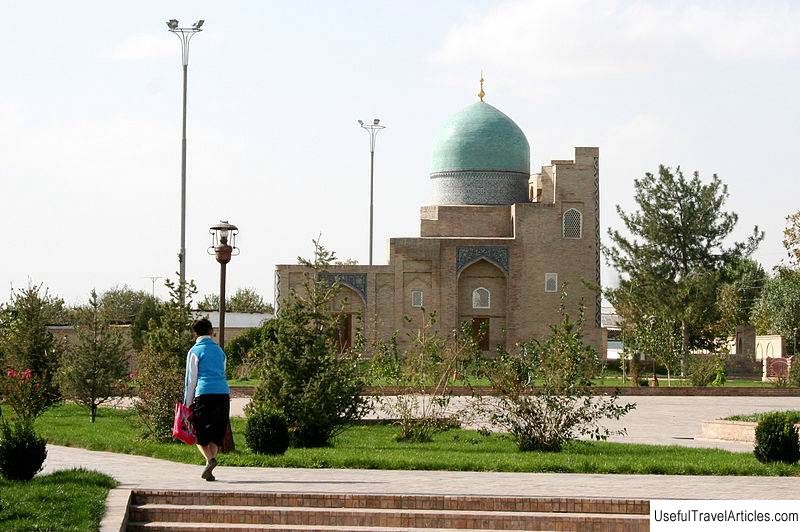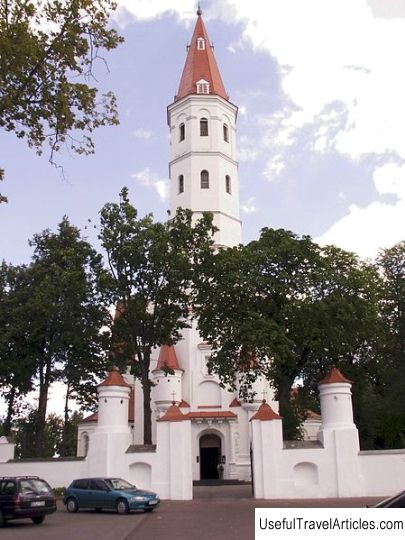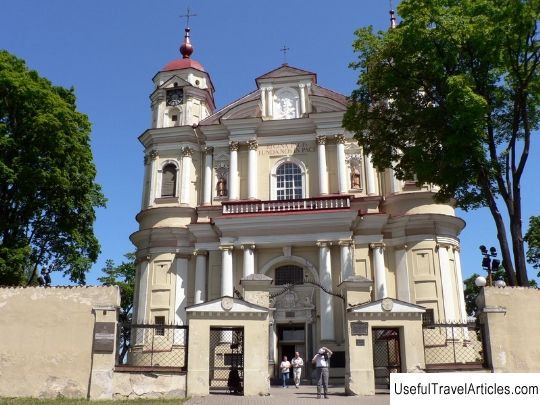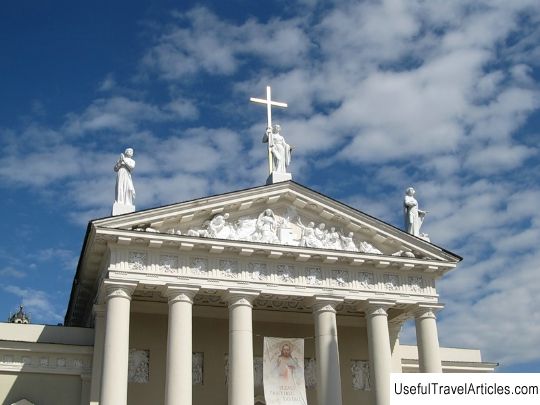Cathedral of Saints Peter and Paul (Kauno Sv. apastalu Petro ir Povilo arkikatedra bazilika) description and photos - Lithuania: Kaunas
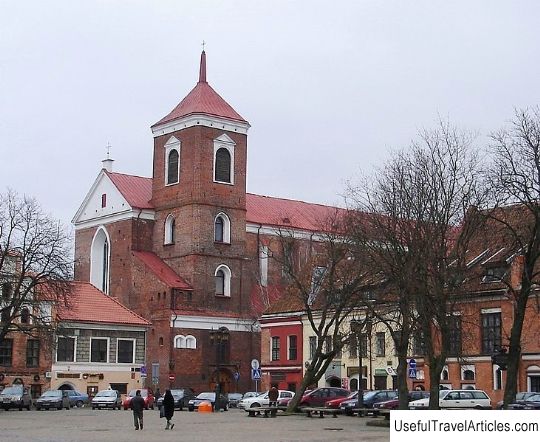
Cathedral of Saints Peter and Paul (Kauno Sv. apastalu Petro ir Povilo arkikatedra bazilika) description and photos - Lithuania: Kaunas. Detailed information about the attraction. Description, photographs and a map showing the nearest significant objects. The name in English is Kauno Sv. apastalu Petro ir Povilo arkikatedra bazilika. Photo and descriptionThe Cathedral of Saints Peter and Paul is one of the largest churches not only in the city of Kaunas, but throughout Lithuania. Its length is 84 meters, width - 34 meters, height - 28 meters. The famous cathedral is included in the list of architectural monuments protected by the state. The exact date of the construction of the temple is still unknown, however, it is believed that it appeared in 1408-1413. Initially, a one-nave part (now a presbytery) was erected in the Gothic style, later a two-storey sacristy with unique cellular vaults with the widest spacing in Europe (7.8 meters) was added to it. The rest of the temple was built in the middle of the 17th century as a basilica, which is a rectangular three-aisled cathedral with a presbytery, ending with a faceted three-walled apse. The middle nave is 30 meters high. At the corner of the western facade rises a powerful bell tower 55 meters high, built in the 18th century. In the 17th and 18th centuries, the church suffered greatly from fires and wars. In 1775, the main altar was built in the church, which has survived to this day. In 1800, it underwent restoration, after which it almost did not change. In 1893-1897, according to the plan of the architect G. Verner, a neo-Gothic chapel was added to the side wall of the presbytery, distinguished by graceful forms and proportions of the interior decoration and highly artistic decor. Approximately 100 years later, the temple was given the status of a cathedral. In 1921, in honor of the 500th anniversary of the founding of the Samogitian episcopate, the cathedral was awarded the title of basilica. After the establishment of the ecclesiastical province of Lithuania, the basilica became a Cathedral with the throne of the Metropolitan Archbishop. The modern style of the Cathedral of Saints Peter and Paul can be attributed to the transitional style from the Gothic to the Renaissance. The interior, consisting of Gothic elements, has retained only mesh rib vaults in the presbytery and honeycomb vaults in the storage room for religious items (sacristy). It is dominated by the late Baroque style. Columns of the Corinthian order are everywhere. Nine altars draw attention to the decoration of the cathedral. They are installed at the eastern ends of the naves and at the pillars in such a way that the splendor of the overall composition of the cathedral decoration increases towards the majestic two-tiered main altar with sculptures and the painting "The Crucifixion and Mary Magdalene", created by an unknown artist. The three-tiered altar made of wood in the left nave (17th century) has an extremely high artistic value. A vine-shaped ornament cuts through its hollow columns. The altar is decorated with paintings by an unknown artist "The Assumption of the Virgin Mary" and "The Crowning of Our Lady" (17th century), medallions and decorative carvings. On the walls and in other altars, you can also see many artistically valuable paintings. Among them, of particular interest are the "Conversion of St. Paul" and "The Wonderful Fishing" by the painter M.E. Andriolli (end of the 19th century). The cathedral is famous for the image of the Suffering Mother of God. This is the oldest image of the Kaunas temple. It is believed that he gives deliverance. The sacrificial offerings of the parishioners, placed on both sides of the image, which was recognized as miraculous already in the 17th century, speak of this faith. An absolutely organic combination of Gothic, Baroque and Historicism styles is the main advantage of the cathedral.     We also recommend reading Fort Christiansborg (Osu Castle) description and photos - Ghana: Accra Topic: Cathedral of Saints Peter and Paul (Kauno Sv. apastalu Petro ir Povilo arkikatedra bazilika) description and photos - Lithuania: Kaunas. |
